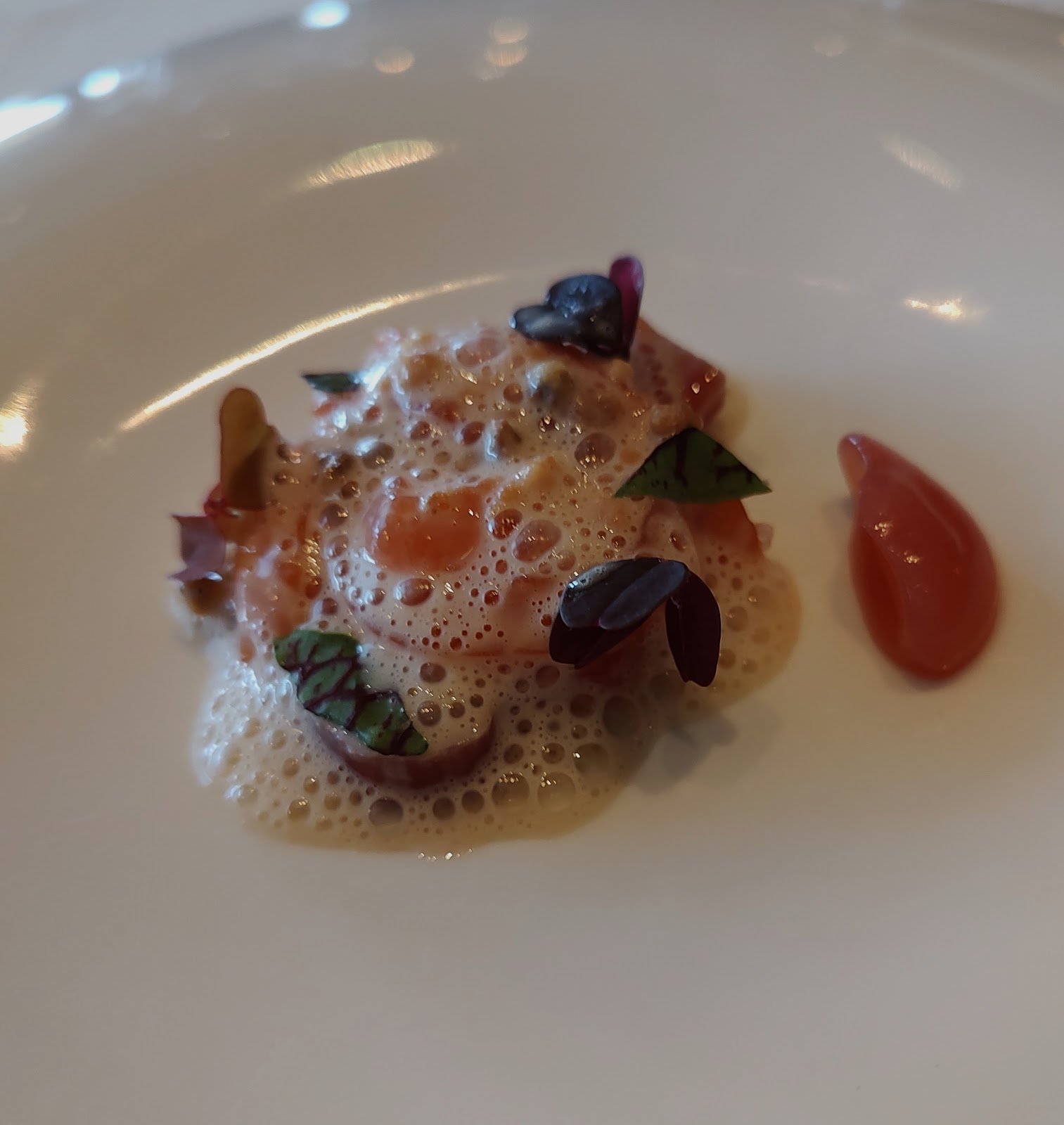In May, we flew to Denver, rented a car, and drove to
Boulder to observe a “celebration of life” for my brother.
We arrived the day before and decided to memorialize Jim
in a way that he would have appreciated: eating a good meal at a high-end
restaurant. We chose Frasca Food and Wine, a James Beard Foundation Award winning
restaurant. In 2008, it won Best Chef;
in 2013, Outstanding Wine Service; in 2019, Outstanding Service. According to
their website, it is inspired by the food and wine traditions of the
northeastern region of Friuli-Venezia Giulia in Italy.
The site continues: “Friuli-Venezia Giulia is a sub-alpine region in northeast Italy, nestled at the foot of the Carnic and Julian Alps and bordered by Austria, Slovenia, and the Adriatic Sea, a region of immense cultural blending, geographical diversity, and idyllic beauty. Part of the Friulano food tradition is the neighborhood frasca. Historically found throughout Friuli, frascas were friendly and informal gathering places, a destination for farmers, friends, and families to share a meal and a bottle of wine. Identified by a tree branch hanging over a doorway portal, they were a symbol of local farm cuisine, wine, and warm hospitality. As the harvest came to a close, the branch would wither and change colors to indicate the end of the season. The frascas would then close their doors until the next year.”
At the restaurant, the
wine list was extensive and expensive, some bottles in the $2000 to $5000
range with a few north of $10,000; the menu not so extensive: it featured two pris fixe choices,
four courses or eight. Both were
available with suggested wine pairings for extra money. We chose eight courses; and instead of the
restaurant’s wine pairings, a bottle of Petrussa 2020 Schioppettino, an Italian
red.
The first course came in three parts, a small curl of eel (scrumptious), speared on a toothpick; a single shigoku oyster in the shell with a scattering of white sturgeon caviar on top (exquisite) seated I don’t know why on a bed of sea salt; and a small serving of “whipped montasio” (an unpasteurized cow’s milk cheese, a monastery cheese, aged three months, originating from the Friuli Venezia Giulia and Veneto provinces.)
The third course was bread (sourdough), with a plate of “Rodolphe le meunier beurre de baretta,” (creamy butter, from cows in Normandy, made in a wooden butter churn from pasteurized cream and then molded by hand) covered with gold foil. The butter was good; the gold was more visual than tasty.
Next came Seppia (cuttlefish) rings with a slice of pork sausage within the ring, a presentation I had not seen before, served on a spread of polenta with a couple of peas and vinaigrette. I’m afraid the sausage overpowered the mild flavor of the squid but the polenta was good.
The fifth course was “Agnolotti Lunga”, a small slice of rabbit wrapped in pasta and covered with a stinging nettle sauce. Scattered across the agnolotti
The last course was “Rabarbaro,” a rhubarb and apple terrine, along with zabaione, sorbet, and a tonka tuille.
Finally we were brought an odd ceramic tray with a variety of tiny sweets, and I had an espresso and Deb a cappuccino. The meal had taken two hours and twenty-five minutes. Jim would have enjoyed it. We, however, had experienced more than enough of wretched excess.











